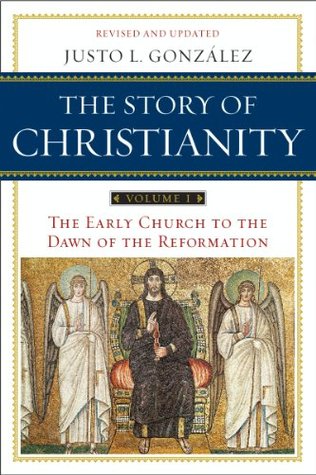More on this book
Community
Kindle Notes & Highlights
Read between
August 11 - October 9, 2017
and it was clear that this differed in many ways from what was generally accepted—
There were several elements in their philosophy that profoundly disturbed the theologians.
There was, however, an alternative that existed between that of the Averroists and that of traditional Augustinian theology.
Philosophy operates on the basis of autonomous principles, which can be known apart from revelation, and seeks to discover truth by a method that is a strictly rational.
The theologian, on the other hand, does set out from revealed truths, which cannot be known by reason alone.
revealed data are always more certain than those of reason, which may err.
What we have here is a case in which reason cannot attain truth, for the object of inquiry is beyond the scope of human reason.
Many who knew Thomas in his early years failed to see his genius.
Some time before that, he had a series of mystical experiences and started to write less and less, until about a year before he died.
Albert, his teacher, outlived him, and became one of the staunchest defenders of his views.
According to Thomas, some truths are within the reach of reason, and others are beyond it. Philosophy deals only with the first; but theology is not limited to the latter.
all truth necessary for salvation, including that which can be reached by reason, has been revealed.
Therefore, the existence of God is a proper subject for both philosophy and theology, although each arrives at it following its own method.
Thomas’s work was of great significance for the ongoing development of theology.
Thomas’s Summa Theologica has been compared to a vast Gothic cathedral—a work which like many Gothic cathedrals, was never finished.
Thomas’s significance is even greater in his ability to turn a philosophy that many considered a threat into an instrument in the hands of faith.
Platonism also had its own dangers.
There was therefore the danger that theologians would pay less attention to Jesus Christ as a historical figure, and more to the eternal Word of God—
therefore there was a struggle before Thomism was considered an acceptable theological system.
Not only did he help the church cope with new ideas coming out of the Aristotelian revival, but in doing so he opened the way for modern science and observation.
one could even say that it was Thomas who opened the way for Western modernity.
Following Francis’s impulse, his followers preached not only to Christians, but also to others.
Also, after the failure of the Crusades, Franciscans were the main missionary body remaining in the Holy Land—
others felt that the best way to achieve the conversion of non-believers was through a continuation of the crusading ideal.
Among the Eastern churches, the most remarkable expansion took place out of Russia.
Medieval churches had two purposes, one didactic and one cultic.
Church buildings thus became the books of the illiterate, and an attempt was made to set forth in them the whole of biblical history,
The cultic purpose of church buildings centered on the medieval understanding of communion.
The church was not seen primarily as a building for meeting or even for worship, but as the setting in which the great miracle took place.
there was a growing distinction between the people who attended services, and the priests and monks who officiated and sang in it.
Toward the middle of the twelfth century, however, Romanesque architecture began to be supplanted by Gothic.
in all of these elements of unity there were tensions and weak points that would eventually bring down the imposing edifice of medieval Christianity.
The monetary economy, which had been developing during the last two centuries, became a dominant factor toward the end of the Middle Ages.
the bourgeoisie tended to support the efforts of kings to curtail the power of the high nobility.
Powerful nobles could afford to disobey their monarchs only as long as the latter did not have the resources to raise armies against them.
Nationalism became a significant factor during this period.
Nationalism in turn undermined the papal claims to universal authority.
the papacy as an institution lost a great deal of its prestige and authority,
this war so involved the rest of Europe that some historians suggest that it be called the “First European War.”
But Joan convinced him to trust her,
From that point on, the course of the war changed.
she had become the national hero of France.
This long war had enormous consequences for the life of the church,
the English came to see the papacy as their enemy.
nations chose their allegiance partly on the basis of alliances and enmities created by the Hundred Years’ War—
Another event that set the stage for the life of the church in the later Middle Ages was the Great Plague of 1347.
In a few months, between 1348 and 1350, the plague swept the entire continent.
It would take Europe several centuries to find a measure of demographic and economic stability.
it seemed to some people that Death had come to prefer younger victims.
Among intellectuals, this led to doubts regarding the ability of reason to grapple with the mysteries of existence. Among the general populace, it encouraged superstition.


